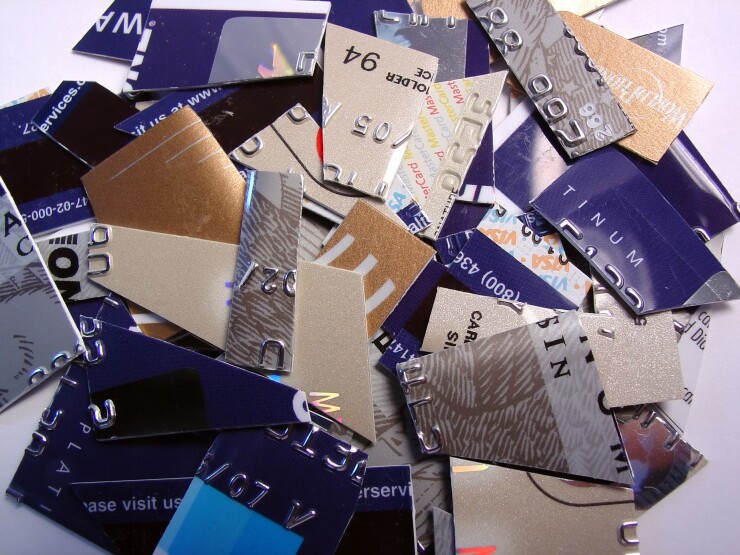
Of the six billion plastic payment cards in circulation globally, most are made of virgin plastic instead of recycled materials, and many banks want alternatives. The problem is that it can be costly to make changes.
Mastercard hopes to accelerate banks' movement toward cards made with more sustainable materials, through a mandate announced on Wednesday that all newly produced Mastercard plastic payment cards must include recycled or "bio-sourced" materials after Jan. 1, 2028.
The move is the first such effort by a card network to eliminate use of virgin plastic such as polyvinyl chloride (PVC), which is widely used to make credit, debit and gift cards globally due to its availability and versatility, Mastercard said in a press release.
Mastercard said it will support issuers in the transition, which will require issuers to make sure all new payment cards meet the requirement to be made of recycled variations on existing materials such as rPVC, rPET or PLA that must be certified by a third-party auditor. The card network didn't specify whether there will be financial concessions for issuers whose budgets or planning timelines can't accommodate Mastercard's new deadline.
Some issuers are already in compliance with Mastercard's new rule.
Capital One recently relaunched
But many smaller issuers may struggle to comply with Mastercard's mandate.
The St. Petersburg, Florida-based de novo bank initially considered eliminating physical cards altogether, but that wasn't feasible because many digital wallets require customers to enter a three-digit security code that's printed only on a physical card, said Chris Cucci, the bank's senior vice president and chief of staff.
Next, Climate First sought a source for recycled-plastic cards, but the cost was three to five times that of an ordinary virgin-plastic debit card at the time of the product's launch in 2021, according to Cucci.
"The minimum-size order for any type of payment card is high, and when you talk about a new bank like ours with just a few thousand customers, it got really pricey to buy that many recycled-plastic cards and just hold them in stock while we're also trying to provide a good value and low-cost options to our customers," Cucci said.
Silver Spring, Maryland-based Future also ran into problems last year when it tried to bypass plastic altogether by relying solely on a virtual version of its climate-friendly FutureCard, which rewards consumers for making environmentally responsible purchases.
A few months after launching with its digital-first account,
Mastercard's rule specifies that all cards produced after 2028 must be made of recycled plastic; issuers may continue to use existing card stock until it's depleted. The life span of a payment card is about five years.
Independent of Mastercard's move, makers of payment card stock were already planning to get away from using virgin plastic. Last year, Germany-based manufacturer Giesecke + Devrient said it plans to eliminate virgin plastic from its card products by 2030.
Banks are likely to eventually shift most of their card stock to recycled or environmentally friendly materials, but they're unlikely to get rid of physical cards within the next several years, said Hugh Tallents, financial services practices lead at New York-based consulting firm cg42.
"I don't see cards going away," Tallents said. "They may evolve in their form and you'll see more cards being loaded into digital wallets for day-to-day usage, but people are creatures of habit and they're going to want a physical card for reassurance as a backup payment method, or a way to get money out of an ATM for the foreseeable future."






